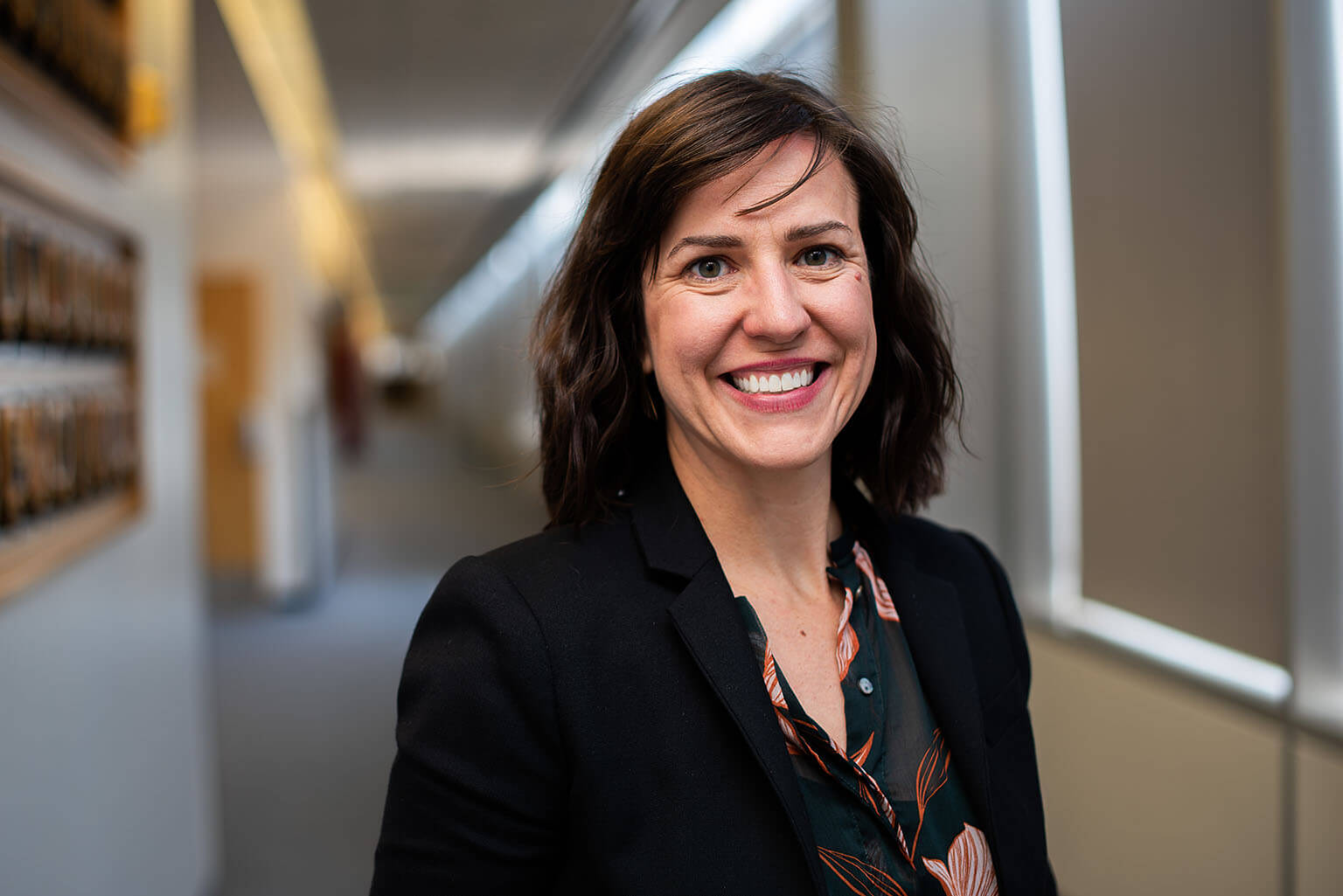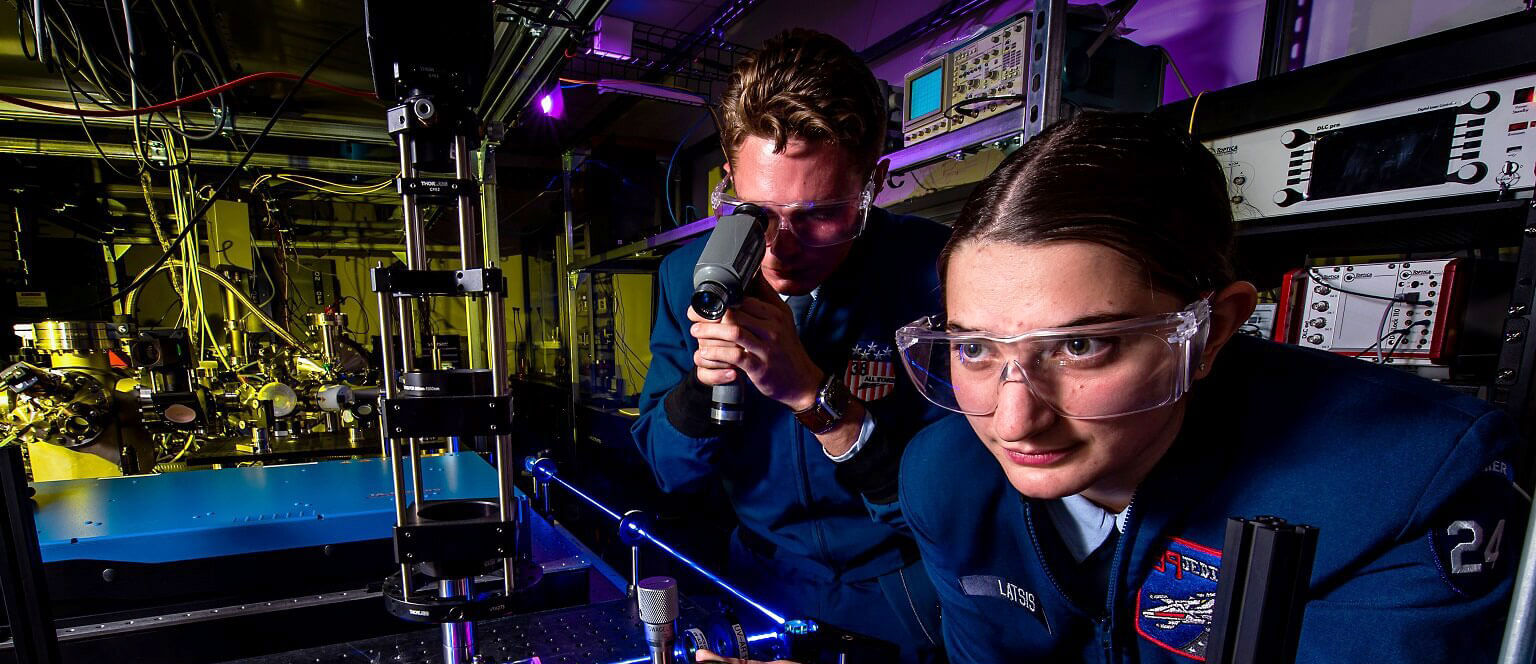Physics professor seeks impact beyond the classroom
 Dr. Kimberly de La Harpe, a U.S. Air Force Academy Department of Physics and Meteorology professor, has been on the faculty for 12 years. (U.S. Air Force photo by Trevor Cokley)
Dr. Kimberly de La Harpe, a U.S. Air Force Academy Department of Physics and Meteorology professor, has been on the faculty for 12 years. (U.S. Air Force photo by Trevor Cokley)
By Randy Roughton
U.S. Air Force Academy Strategic Communications
U.S. AIR FORCE ACADEMY, Colo.– Dr. Kimberly de La Harpe, a U.S. Air Force Academy Department of Physics and Meteorology professor, aims to make her impact as an instructor in three areas: in the classroom, in the lab and in her community.
“Any time you are dealing with faculty, there are three pillars to our jobs,” de La Harpe said. “Teaching, research and service are what we do. That is how we think about our job.”
The teaching pillar
During de La Harpe’s 12 years as an Academy professor, she has taught more than 550 cadets. She came to the Academy in 2011 after completing her doctorate in Physical Chemistry from The Ohio State University. The professor accepted her first position in the Academy’s Quantitative Reasoning Center. She moved to physics instruction in 2015.
Like most Academy instructors, de La Harpe’s goal is to be the best professor she can be. She said she enters her classroom each day, resolving to inspire her cadets and help them find more confidence to develop physics skills. Those skills will aid them as they continue their education at the Academy and beyond, de La Harpe said.
She said she considers an understanding of physics concepts as the ladder to cadets’ development of skills that will serve them throughout their time at the Academy. Understanding the concepts of how a circuit or magnet works helps cadets develop problem-solving and scientific-reasoning skills, along with confidence and perseverance, she said.
Impact as a research advisor
In addition to teaching physics, de La Harpe also provides mentorship to cadets in her role as a research advisor.
“Dr. de La Harpe has been a phenomenal mentor to me in my academic career,” said Cadet 1st Class Mikhail Stiffler. “As my research advisor, she has changed my perspective of what learning can be. With her guidance, I have become a more independent, thorough, and critical thinker. She has helped me develop a set of professional tools like the ability to problem-solve. That will serve me well in all of my future endeavors as a scholar and as an officer in the Air Force. I could not ask for a better teacher.”
 Cadets at the U.S. Air Force Academy Department of Physics and Meteorology use lasers to study the properties of materials in the optic lab. (U.S. Air Force photo by Trevor Cokley)
Cadets at the U.S. Air Force Academy Department of Physics and Meteorology use lasers to study the properties of materials in the optic lab. (U.S. Air Force photo by Trevor Cokley)
The research pillar
Aside from her physics instruction, de La Harpe works with research students on independent projects and as part of the physics capstone course. Her research students use lasers to study the photophysical properties of materials. Last year, she had four students working on two projects, collecting data that they presented at conferences and working toward getting the findings published in peer-reviewed publications. They work with the Air Force Materials and Manufacturing Directorate at Wright-Patterson Air Force Base, Ohio, and Case Western Reserve University in Cleveland on this research.
Furthermore, she also does research in physics education. Along with her colleagues in the Department of Physics and Meteorology, de La Harpe tries to develop more effective methods for teaching physics and scientific reasoning skills. In early August, she went to a conference in Boulder, Colorado, to share their findings with other educators.
“I’m always interested in understanding and developing better ways to teach physics,” de La Harpe said. “I am active in education research, looking at improving students’ quantitative literacy skills in introductory general physics and developing experiments or the demos that utilize the sensors in your phone. My research interests are always education research and trying to improve what I do in the classroom.”
The service pillar
For the service pillar, de La Harpe serves an important role in an Academy STEM outreach program. Every spring semester, she takes about 50 female cadets to Otero College in La Junta, Colorado. The cadets spend the day interacting with about 200 middle-school girls for a program designed to inspire them to pursue opportunities in science, technology, engineering and math disciplines.
“That’s a passion of mine,” de La Harpe said.
Twelve years of progress in Academy instruction
Today, Academy instructors have more advanced technological tools than when de La Harpe joined the faculty in 2011. She cites video teleconferencing and smartphones’ capabilities in physics assignments among her classroom’s most impactful tools.
“What we’ve been trying to do, starting last spring with our scholars’ course, is [examine] how to use your phone as a physics tool,” she said. “There are great physics apps that allow you to use your phone to measure things like velocity and acceleration, do experiments with them and bring that into the classroom. That way, students can do their own experiments outside their classroom with their phones.”
As she begins her 13th year as a professor, de La Harpe continues to look for innovative ways to inspire young people in her three pillars of service as an Academy faculty member.